Understanding and Preventing the Most Common Baseball Injuries
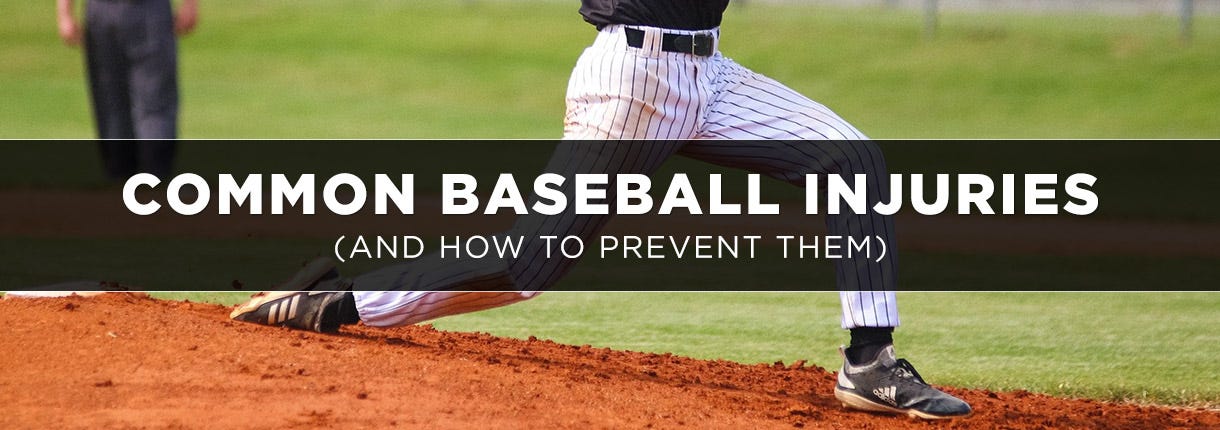
Baseball is an extremely repetitive sport and for this reason, overuse injuries are some of the most commonly seen injuries in the sport. In this article, we have broken down the main types of injuries when it comes to pitching, hitting, base running and catching. We will finish up by going over some of the best injury prevention strategies and provide coaches with a few tips and tricks when it comes to preventing injuries in youth baseball players. Keep in mind, we are NOT doctors, so, always consult your doctor if you experience an injury!
- Pitching Injuries
- Hitting Injuries
- Base Running Injuries
- Catcher Injuries
- How to Prevent Baseball Injuries
- Recovering from Baseball Injuries
- Tips for Coaches on Kids Baseball Injuries
Overview of Pitching Injuries
While lower body injuries can happen in pitchers, the majority of the injuries occur in the elbow or shoulder. Pitching is a very repetitive motion, and when that repetition is an unnatural body motion like overhand throwing, injuries are bound to happen. Below we will look into some of the most common injuries that pitchers experience in baseball.
Most Common Pitcher Injuries
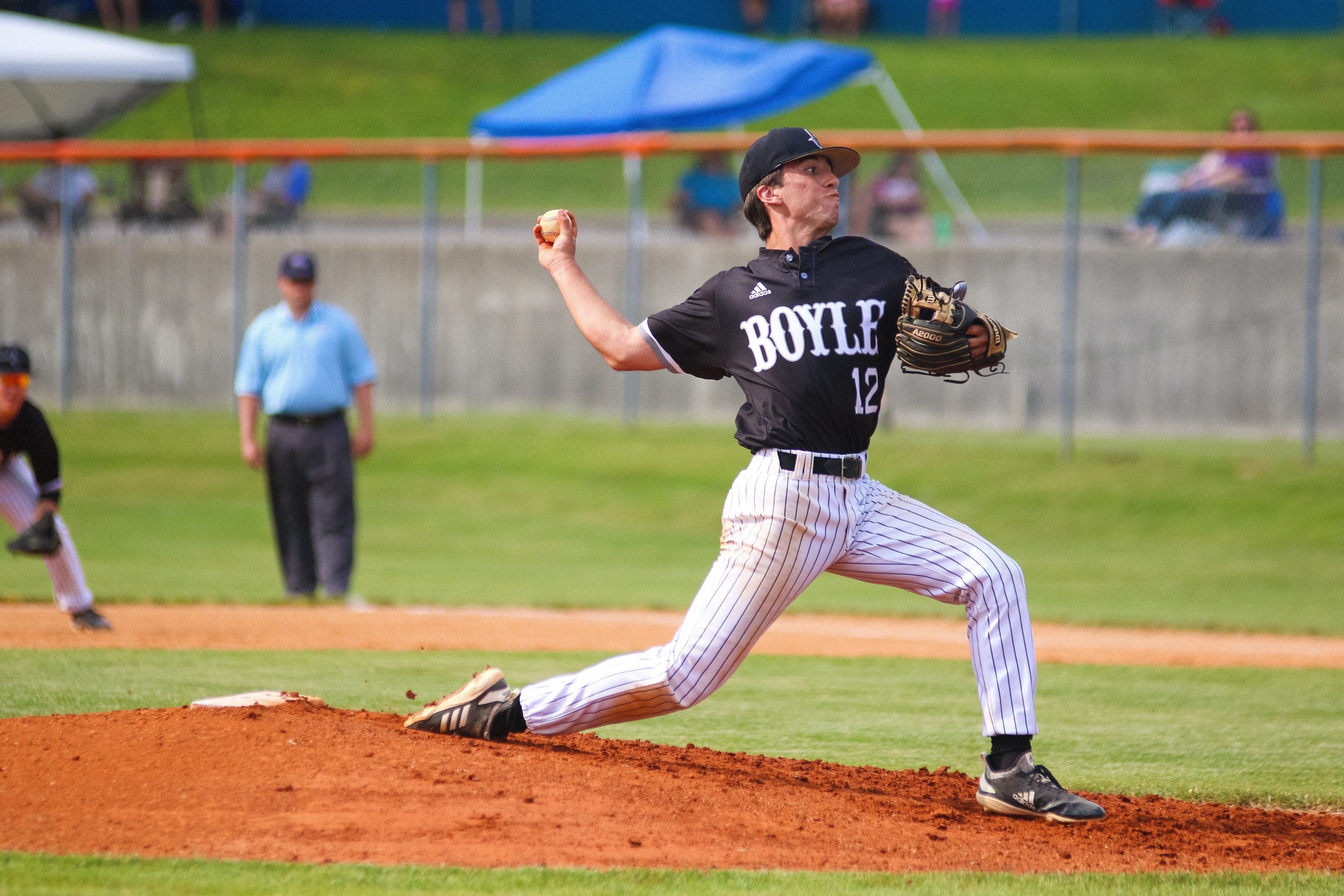
Ulnar Collateral Ligament Reconstruction (Tommy John)
What is Ulnar Collateral Ligament Reconstruction (Tommy John)?
Injury to the Ulnar Collateral Ligament (UCL) is very common in baseball, and the surgery to repair it is called Tommy John surgery. In this surgery, a ligament is taken from elsewhere in the body to replace the torn UCL.
How do you get Ulnar Collateral Ligament Reconstruction (Tommy John)?
Repetitive stress or trauma to the elbow. Throwing motions put extreme stress on the UCL, that is why this injury is so common with pitchers.
How do you prevent Ulnar Collateral Ligament Reconstruction (Tommy John)?
Most elbow injuries are caused by weakness in the back of the shoulder, so strengthening and condition of the shoulder can help. Play more catch and take the time to properly warm up the arm.
How do you recover from Ulnar Collateral Ligament Reconstruction (Tommy John)?
Players go through a rehabilitation period that includes a physical therapy routine. Rehabilitation time can vary from player to player, depending on how quickly the tissue is healing.
Elbow Tendonitis
What is Elbow Tendonitis?
Inflammation, irritation and swelling of tendons around the elbow, typically on medial or inner part of the elbow when it comes to pitchers.
How do you get Elbow Tendonitis?
Typically, it is caused by overuse of the throwing arm, but can happen at really anytime due to the repetitive throwing motion pitchers must perform.
How do you prevent Elbow Tendonitis?
Stretching and arm band work prior to and after throwing can really help. Also, know your body, if you feel any sort of pain in your elbow, reduce the amount you are throwing or completely rest your arm for a day or two.
How do you recover from Elbow Tendonitis?
Definitely stop throwing, and rest. Once pain subsides for the most part, strengthening the muscles around the elbow by lifting light weight can be beneficial in some cases as well.
Labral Tears (Shoulder)
What are Labral Tears?
To put it simply, these are tears in the cartilage like, labral tissue surrounding the top of the shoulder socket. The tendon can pull away from the bone in the shoulder, tearing the labrum in the process.
How do you get Labral Tears?
Much like tendonitis in the elbow, labral tears in the shoulder are mainly caused by overuse of the throwing arm and using the same throwing motion repetitively.
How do you prevent Labral Tears?
Monitor the amount of pain there is in your shoulder when throwing. If there is any, limit the amount of pitches you throw or the amount you are throwing in general. Stretching and doing arm band work can also help to strengthen the muscles surrounding the shoulder.
How do you recover from Labral Tears?
For less severe pain from a labral tear, sometimes just resting and not throwing for a few weeks can help greatly. Icing and doing some physical therapy may also do the trick. However, in some more severe cases, surgery is really the only option to recovery.
Oblique Strains
What are Oblique Strains?
Oblique strains occur in the oblique muscles which lie alongside the rectus abdominis muscles, or abs for short. Simply put, an oblique strain occurs when one or both of the oblique muscles is overstretched or partially torn.
How do you get Oblique Strains?
The most common oblique strain in baseball is to the internal oblique, which sits underneath the external oblique. This is due to internal oblique being the most activated core muscle during hitting and especially while pitching.
How do you prevent Oblique Strains?
Maintaining proper muscle flexibility and strength can help greatly in preventing oblique strains, so make sure to always stretch before and after pitching or throwing. Take days off from throwing and rest if you notice any pain starting to occur in the obliques.
How do you recover from Oblique Strains?
In most cases, just simply resting and icing the painful area can be beneficial to recovery. Doing light core exercises once pain subsides a bit can help to strengthen the muscles. In more severe strains though, surgery may be the only option to recovery.
Rotator Cuff Injuries
What are Rotator Cuff Injuries?
Tendons in the rotator cuff tendons can become inflamed or irritated, causing them to become strained. This can lead to the tendons breaking down, ultimately leading to torn ligaments in the rotator cuff.
How do you get Rotator Cuff Injuries?
These are mainly caused by overuse of the shoulder and repetitive overhand throwing motions while pitching. Additionally, rotator cuff tendons can begin to tear down with age, sometimes leading to tears.
How do you prevent Rotator Cuff Injuries?
The best way to prevent these injuries is to work on strengthening the muscles in the shoulder around the rotator cuff by exercising. Using bands before throwing will also help stretch and strengthen shoulder muscles.
How do you recover from Rotator Cuff Injuries?
Surgery may be necessary if rotator cuff injuries occur frequently. Otherwise, doctors will typically prescribe any inflammatory drugs and or physical therapy.
Overuse Injuries for Pitchers
Overuse injuries can cause all sorts of injuries to the elbow and shoulder. Tommy John and injuries to the rotator cuff are the most common injuries when it comes to overuse.
Maximum Pitch Counts by Age
| Age | Pitches/Game |
|---|---|
| 7-8 | 50 |
| 9-10 | 75 |
| 11-12 | 85 |
| 13-16 | 95 |
| 17-18 | 105 |
Rest Days Required by Pitches Thrown
| Pitches (14-and-under) | Pitches (15-18) | Rest Calendar Days Required |
|---|---|---|
| 66+ | 76+ | 4 |
| 51-65 | 61-75 | 3 |
| 36-50 | 46-60 | 2 |
| 21-35 | 31-45 | 1 |
| 1-20 | 1-30 | 0 |
Recommended Age for Throwing Different Pitches
| Pitch Type | Age |
|---|---|
| Fastball | 8 |
| Changeup | 10 |
| Curveball | 14 |
| Knuckleball | 15 |
| Slider | 16 |
| Forkball | 16 |
| Screwball | 17 |
General Best Practices for Pitchers
- Always warm up and stretch before throwing
- Long toss frequently
- Tell your coach if you are experiencing any arm pain whatsoever
- Ice arm after throwing (optional)
Overview of Hitting Injuries
Hitting in baseball puts lots of stress on basically every part of the body, from your hands to your hips to your legs, the whole body is working very hard repeatedly. Below are some of the most common injuries experienced by hitters in baseball, with some information on how to prevent and recover from those injuries.
Most Common Hitter Injuries
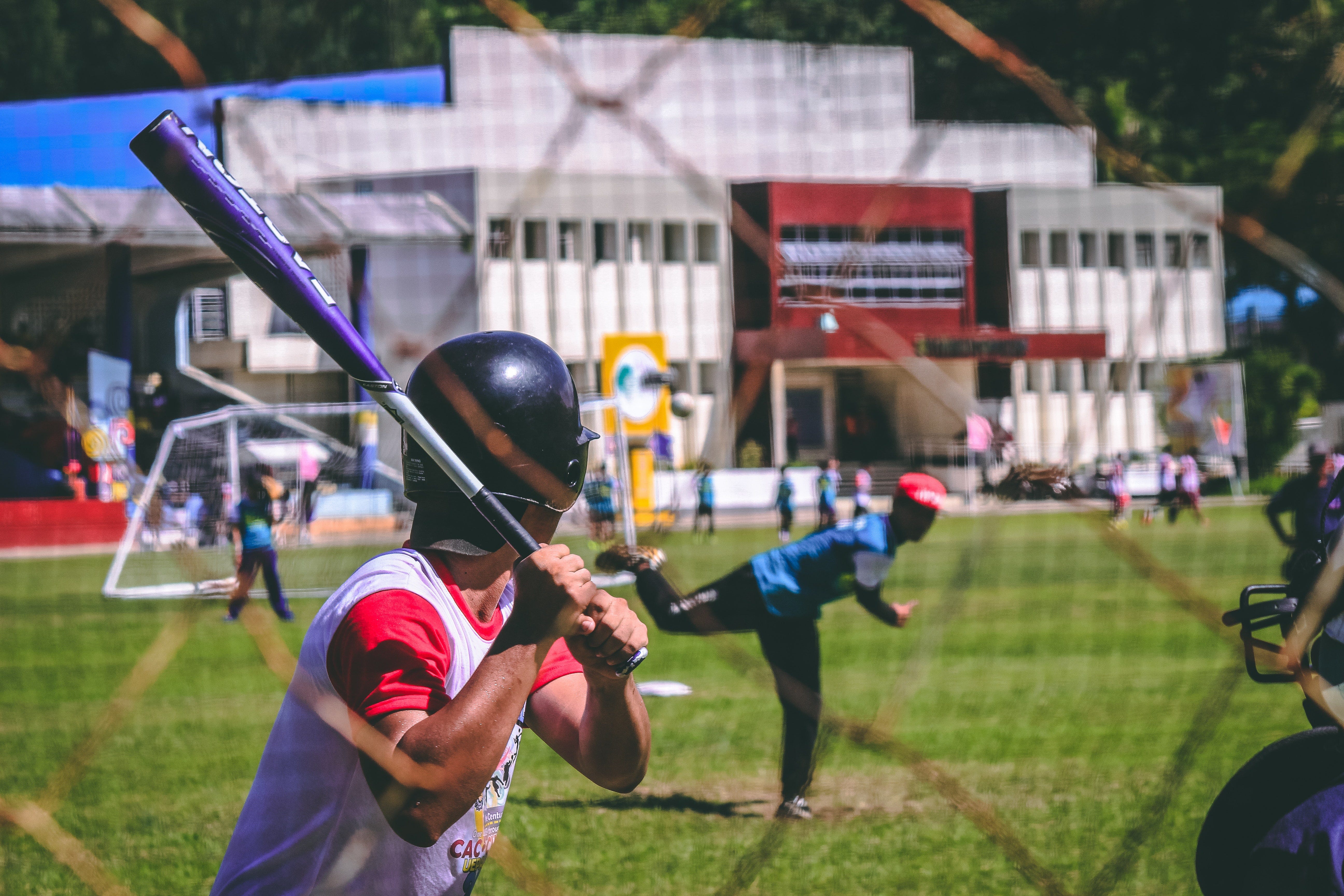
Meniscus Tears
What are Meniscus Tears?
Within each knee there are two “C shaped” pieces of cartilage, called menisci, that keep the femur and tibia from grinding against each other. When the knee twists or become hyper-flexed, these can tear.
How do you get Meniscus Tears?
They most commonly occur when pivoting and turning the knee when hitting but can also happen when running the bases or throwing.
How do you prevent Meniscus Tears?
Always make sure to stretch and warm up the legs to maintain flexibility in the knees. Strengthen the muscles surrounding the knees and remember to rest between workouts, games and practices.
How do you recover from Meniscus Tears?
Typically, recovery will include icing of the knee, pain relievers, and sometimes physical therapy. Some players may elect to undergo surgery if the injury is more severe.
Hand and Wrist Injuries
What is Hand and Wrist Injuries?
These injuries typically include fractures, dislocations, bruised bones and sprains within the hands and wrists. Of these injuries, the most common is fractures of the hamate bone in the hand.
How do you get Hand and Wrist Injuries?
Hitting the ball on the wrong part of the bat (handle or off the end) and getting hit by pitches are the most common causes of hand and wrist injuries for hitters.
How do you prevent Hand and Wrist Injuries?
Thumb pads, padding batting gloves and wrist pads are growing in popularity. Other than protective equipment, there are not really any other ways to prevent these types of injuries.
How do you recover from Hand and Wrist Injuries?
Recovery for these types of injuries typically requires rest, icing, and in more severe cases, surgery.
Muscle Strains
What are Muscle Strains?
Muscle strains are an injury to a muscle or tendon and are very common in baseball players.
How do you get Muscle Strains?
Typically, muscle strains are caused by over stretching or hyper-flexing of a muscle or tendon. Most commonly, these injuries occur in the hamstrings, calves, quadriceps and back.
How do you prevent Muscle Strains?
Proper stretching and warm up prior to games or practices. Staying hydrated is very important.
How do you recover from Muscle Strains?
Rest and physical therapy. Surgery may be required in more severe cases.
Overview of Base Running Injuries
Base running is a lot of accelerated starts, quick stops, and potential collisions when sliding into bases. Therefore, you see a lot of injuries to the ligaments and muscles in the knees and hamstrings specifically. Below we cover some of the most common injuries that occur on the base paths.
Most Common Base Running Injuries
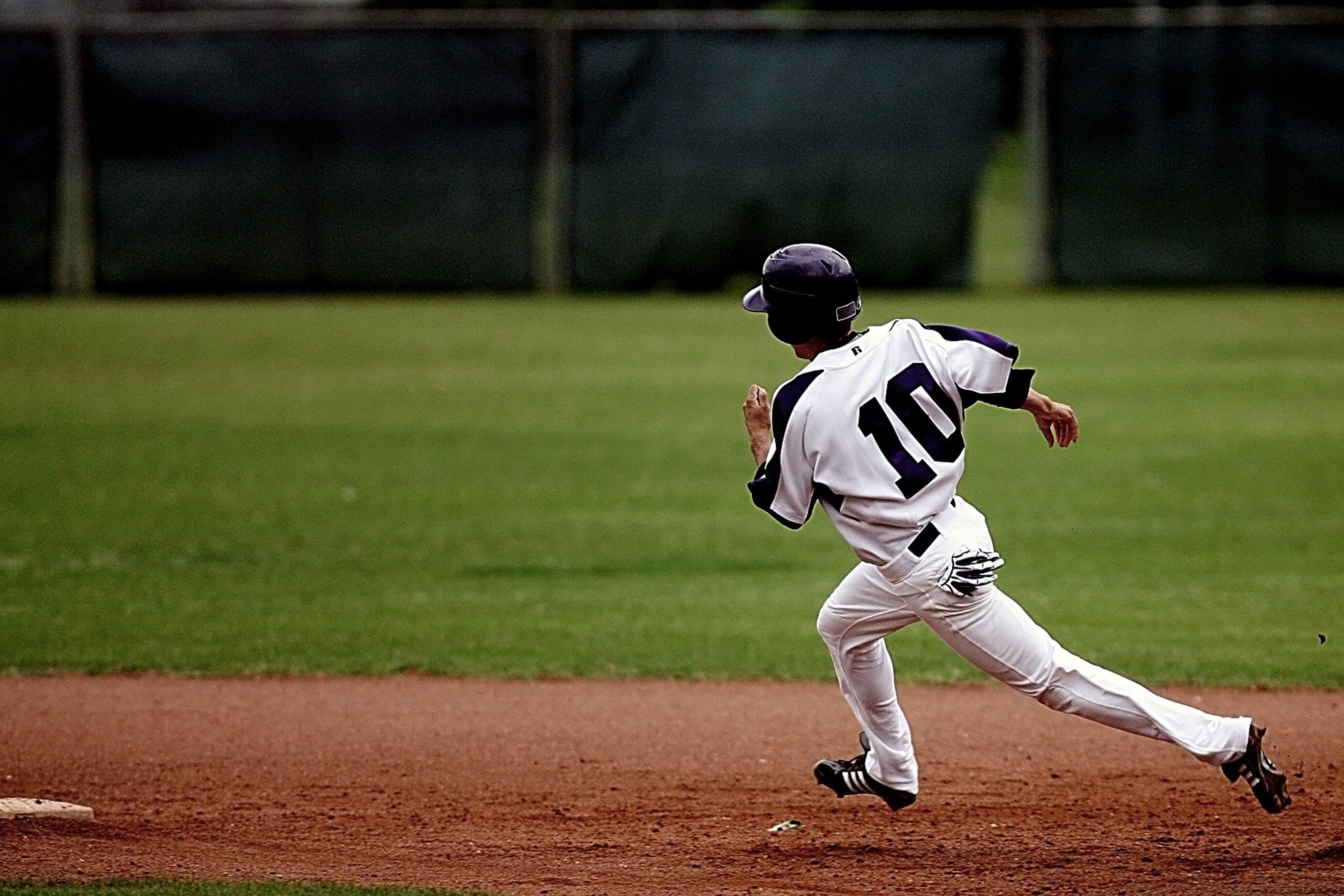
Knee Injuries (ACL/MCL)
What are Knee Injuries?
Most knee injuries that occur when base running are ligament tears, specifically tears of the ACL and MCL.
How do you get Knee Injuries?
These injuries most commonly occur due to quick acceleration, deceleration and pivoting when running the bases.
How do you prevent Knee Injuries?
Stretching before and after practices and games is the most important and effective way to prevent these types of injuries.
How do you recover from Knee Injuries?
When it comes to tears in the ACL and MCL, most of the time surgery is required. Following surgery would be rehab and bracing to potentially prevent future re-injury.
Achilles Tendonitis
What is Achilles Tendonitis?
When the Achilles tendon, which connects the muscles in the calf to the heel, becomes inflamed, swollen and or irritated.
How do you get Achilles Tendonitis?
Tight calf muscles can put more stress on the Achilles tendon. Like most other baseball related injuries, Achilles tendonitis is caused related to overuse.
How do you prevent Achilles Tendonitis?
Making sure to stretch and warm up properly, and rest if you feel any pain.
How do you recover from Achilles Tendonitis?
Recovery can include rest, icing the area, physical therapy and exercises to strengthen the calf muscles.
Hamstring Injuries
What are Hamstring Injuries?
A strain or tear of the tendons and or large muscle groups in the back of the thigh.
How do you get Hamstring Injuries?
Sudden, explosive movements. You are more likely to injure the hamstring if you have injured it before.
How do you prevent Hamstring Injuries?
Stretch regularly and always make sure to warm up prior to practices or games. Strengthening exercise to strengthen the hamstrings.
How do you recover from Hamstring Injuries?
Recovery can include rest, icing the area, using compression wraps or braces, and keeping the leg elevated to reduce swelling.
Overview of Catcher Injuries
Catchers arguably have the most physically demanding job on the field. They are constantly going in and out of the crouch position which puts lots of stress on the knees, and there is the potential of collisions and being hit by bats and balls. Below are some of the most common injuries that catchers experience.
Most Common Catcher Injuries
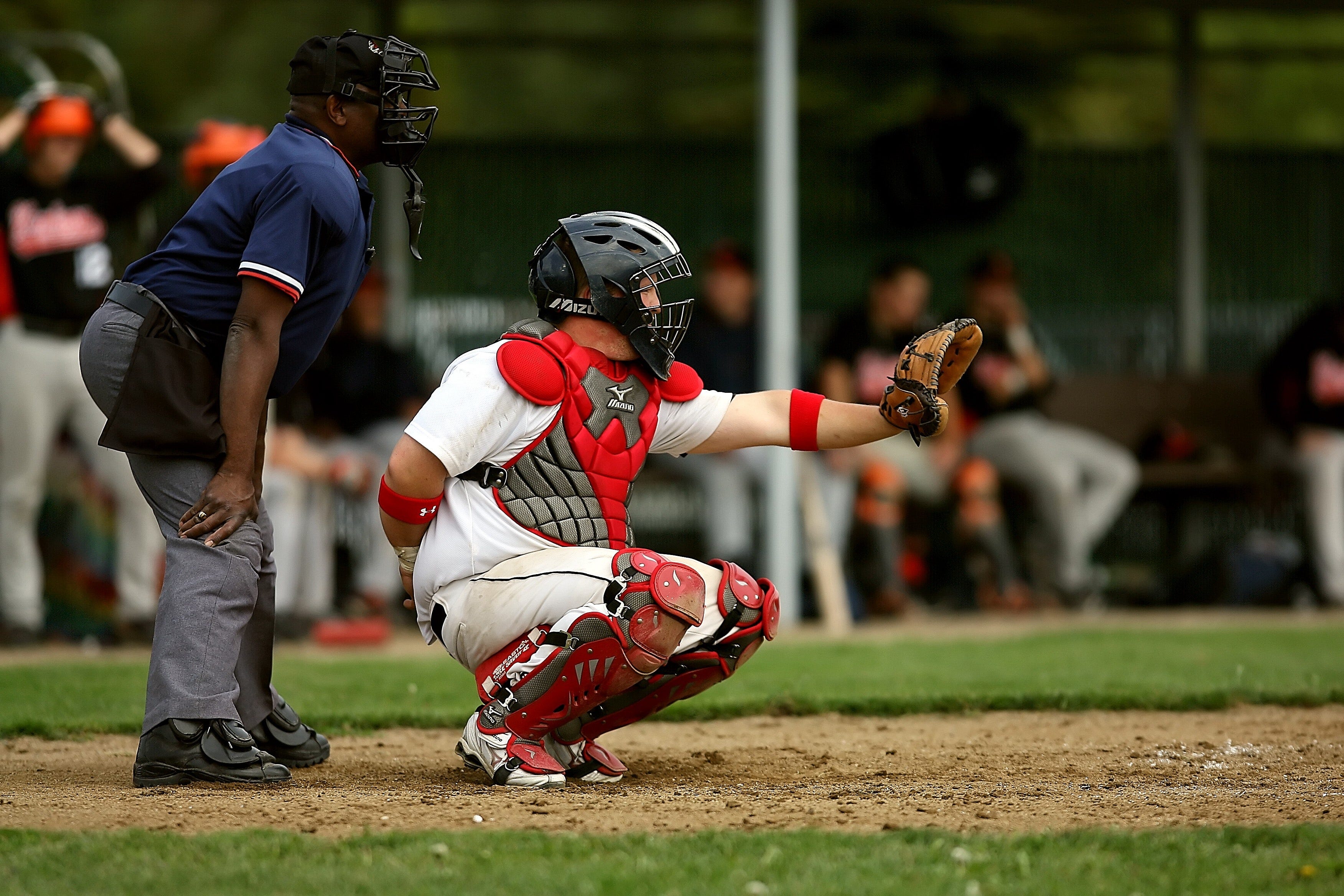
Concussions
What are Concussions?
A traumatic injury to the brain that results in temporary loss of normal brain function.
How do you get Concussions?
They are typically caused by blows to the head from collisions, but in baseball there is also the potential for catchers to be struck by bats and balls resulting in a concussion.
How do you prevent Concussions?
Wear properly designed equipment that decreases chances of concussion on impact.
How do you recover from Concussions?
Definitely do not play with a concussion. Other recovery tips include limiting exposure to bright lights and sounds, resting and staying hydrated.
Knee Injuries
What are Knee Injuries?
In catchers, these injuries are typically tendons and cartilage being pulled and squished resulting in chronic pain and weakening of the knees and making them more susceptible to damage.
How do you get Knee Injuries?
Constant deep squatting and standing in the catching position breaks down cartilage in the knee and quite often results in snapping of tendons or ligaments in the knee.
How do you prevent Knee Injuries?
Knee-savers can be a great edition to your catching gear which physically prevents a player from squatting fully to put less tension on the ligaments and tendons. Other than that, properly stretching is another great prevention method.
How do you recover from Knee Injuries?
Knee injuries are serious, so it is always recommended to contact a doctor for a proper recovery treatment. Icing of the knees will help take swelling down and accelerate the healing process.
Lower Back Injuries
What are Lower Back Injuries?
Typically, these are muscle strains and sprains in the lumbar (lower back) muscle.
How do you get Lower Back Injuries?
In catchers, they are caused by the constant squatting and standing motion into the quick twisting motion of throwing.
How do you prevent Lower Back Injuries?
Proper stretching and strengthening of supporting muscles like the core muscles and legs.
How do you recover from Lower Back Injuries?
Resting is always recommended. Physical therapy may be necessary, accompanied by an icing and heating treatment.
How to Prevent Baseball Injuries
Now that we have discussed some position specific injuries, we will get into some tips and tricks on preventing injuries in baseball as a whole.
Pregame Warmups
You should always make time to warm up before practice or games. Gentle stretching, mainly in the back, hamstrings, arms and shoulders, will get the muscles loosened up and ready to play.
- Elastic band stretching
- Perform some jumping jacks or light calisthenics followed by a slight jog
Postgame Stretches
Stretching and cooling down post-game and after practices is extremely important to injury prevention, reducing soreness and maintaining flexibility in the muscles.
- Take a light jog around the warning track to cool down and to help remove any lactic acid built up in the joints
- Perform slow arm and leg stretches held for 15-30 seconds
Recovering from Baseball Injuries
Consulting with a doctor anytime you become injured is always the best route to take. That way you can be properly evaluated and given the treatment that is best for you. Physical therapy and rehabilitation after an injury is commonly recommended by doctors as this will get you back on the field as soon as possible.
Tips for Coaches on Kids Baseball Injuries
When it comes to coaching, it is very important to pay close attention to your players. Keep an eye out for any signs of injury, as most players will try to hide any pain they are in to continue playing. Always maintain good communication with parents and doctors if a player becomes injured, and never let the player return to play until they are cleared by a doctor.
CPR
Either being certified in CPR yourself as a coach or having an assistant coach or parent on hand that is certified in CPR can be very beneficial to the safety of your players. Typically, during tournaments, medical staff trained in CPR are on hand at all times, but in the instant they are not, being knowledgeable of basic CPR techniques is very important.
First Aid
Being familiar with CPR, first aid, and being able to recognize and treat the most common injuries is especially important when it comes to coaching. Being equipped with a first aid kit of some kind in a coach’s bag is definitely something to think about as well.








